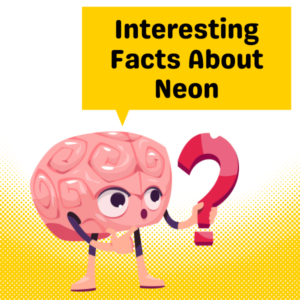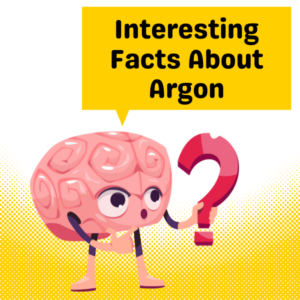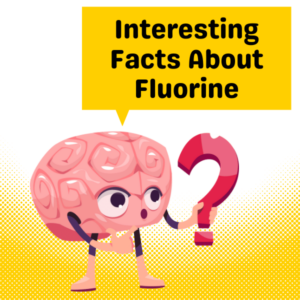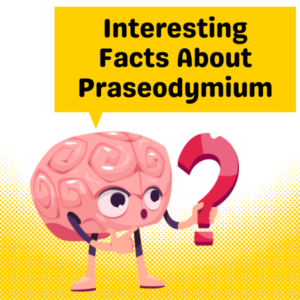Krypton is a fascinating element with a range of intriguing properties and characteristics. In this article, we will explore some interesting facts about krypton that will surely captivate your curiosity. From its discovery to its applications in various fields, krypton has left a significant mark in the scientific world.
Firstly, let’s know about the discovery of krypton. It was first identified in 1898 by Sir William Ramsay and Morris Travers, who were studying the residue left after liquid air had evaporated.
They named the element “krypton” derived from the Greek word meaning “hidden” due to its elusive nature. Krypton is a noble gas, belonging to the same group as helium and neon.
One of the most intriguing facts about krypton is its use in lighting. Krypton is often used in fluorescent lamps and photographic flashes due to its ability to emit a bright white light when an electric current passes through it.
This property makes krypton an essential component in various lighting technologies, contributing to energy-efficient and long-lasting illumination.
Furthermore, krypton has found applications in the field of medicine. It is used in certain laser surgeries, particularly in ophthalmology, to correct vision problems. Krypton lasers emit a precise and intense beam of light, allowing surgeons to perform delicate procedures with high accuracy. This demonstrates the versatility and significance of krypton in advancing medical treatments.
Interesting Facts About Krypton
Krypton is a noble gas that is colorless, odorless, and tasteless.
Krypton is a gas that cannot be seen, smelled, or tasted, making it difficult to detect without specialized equipment.
Krypton is named after the Greek word “kryptos” meaning “hidden”.
The name “krypton” was chosen because of its elusive nature, as it was initially difficult to isolate and identify.
Krypton is a rare element found in the Earth’s atmosphere.
Although krypton is present in the atmosphere, it only makes up a tiny fraction of the air we breathe.
Krypton is used in certain types of lighting, such as fluorescent lamps.
Krypton is often used in lighting applications due to its ability to produce a bright, white light.
Krypton is also used in lasers for medical and scientific purposes.
Krypton lasers are used in various fields, including medicine and research, for their precise and powerful beams.
Krypton has multiple isotopes, with krypton-86 being the most abundant.
Krypton has several different forms, or isotopes, with krypton-86 being the most common and stable.
Krypton is produced through the decay of radioactive elements.
Krypton is formed as a byproduct of the radioactive decay of elements such as uranium and thorium.
Krypton is used in some specialized photographic flashes.
Krypton is sometimes used in high-speed photography to produce intense bursts of light.
Krypton is one of the “noble gases” on the periodic table.
Krypton belongs to a group of elements known as noble gases, which are generally unreactive and stable.
Krypton has a higher boiling point than most other noble gases.
Compared to other noble gases, krypton has a higher boiling point, which makes it useful in certain applications.
Krypton is not known to have any biological role or significance.
Unlike some other elements, krypton does not play a known role in biological processes or systems.
Krypton is used in some specialized windows for energy-efficient buildings.
Krypton-filled windows can help improve insulation and energy efficiency in buildings.
Krypton is a non-toxic gas that poses no significant health risks.
Krypton is generally considered safe to handle and does not have any known harmful effects on human health.
Krypton has been used in certain types of flashlights and lanterns.
Krypton bulbs have been used in some portable lighting devices for their bright and efficient illumination.
Krypton is a trace element in Earth’s atmosphere, making up only about 1 part per million.
Although krypton is present in the air we breathe, it is only found in very small concentrations.
Krypton is used in some specialized welding applications.
Krypton can be used in certain welding processes to create a stable and controlled environment.
Krypton is a relatively rare element in the universe.
While krypton is present in the universe, it is not as abundant as other elements.
Krypton has been used in certain types of high-speed photography.
Krypton flashes are sometimes used in photography to capture fast-moving objects with precision.
Krypton is a stable element that does not readily react with other substances.
Krypton is known for its stability and lack of reactivity, which makes it useful in various applications.
Krypton is used in some specialized research equipment, such as mass spectrometers.
Krypton can be used in scientific instruments to analyze the composition of substances.
Related: Interesting Facts About Fluorite
Fun Facts About Krypton for Students and Kids
Krypton is a fictional planet in the DC Comics universe.
Krypton is the home planet of Superman, a famous superhero. It was created by writer Jerry Siegel and artist Joe Shuster in 1938.
Krypton is located in a different galaxy.
Krypton is not part of our solar system. It is located in the Andromeda Galaxy, which is about 2.537 million light-years away from Earth.
Kryptonians have superpowers on Earth.
Due to the differences in the atmosphere and gravity between Krypton and Earth, Kryptonians possess incredible powers, such as super strength, speed, and the ability to fly, when they are on our planet.
Krypton had a red sun.
The sun of Krypton, known as Rao, emitted red light instead of yellow like our sun. This red sun provided Kryptonians with their powers and abilities.
Krypton was destroyed.
Krypton met its tragic end when its core became unstable, causing massive explosions and earthquakes. This cataclysmic event led to the destruction of the entire planet.
Kryptonite is deadly to Kryptonians.
Kryptonite is a mineral from Krypton that is harmful to Kryptonians. It weakens them and can even kill them if they are exposed to it for too long.
Kryptonians have advanced technology.
On Krypton, the inhabitants had highly advanced technology, including spaceships, holographic communication devices, and advanced medical equipment.
Kryptonians had a different language.
The Kryptonian language, known as Kryptonese, is a fictional language created for the Superman comics. It has its own alphabet and grammar rules.
Kryptonians had a caste system.
Kryptonian society was divided into different castes based on their genetic makeup and abilities. The highest caste, the “Science Council,” held the most power and influence.
Kryptonians had a unique fashion sense.
Kryptonian clothing was often depicted as sleek and futuristic, with metallic accents and bold colors. Their fashion reflected their advanced civilization.
Kryptonians had a rich history and culture.
Kryptonian society had a long and complex history, with its own traditions, art, and literature. They valued knowledge and exploration, which contributed to their technological advancements.
Related: Interesting Facts About Chromium
Most Common Uses of Krypton
1. Lighting
Krypton is commonly used in lighting applications, particularly in high-intensity discharge (HID) lamps. When combined with other gases, such as argon, krypton produces a bright and efficient light source. These lamps are often used in photography, film projection, and automotive headlights.
2. Laser Technology
Krypton gas is utilized in various laser applications, including medical lasers, scientific research, and industrial cutting and welding. Krypton lasers emit a high-intensity beam of light, making them suitable for precise and controlled operations.
3. Window Insulation
Krypton is an excellent insulating gas and is commonly used in double or triple-pane windows. Filling the space between the glass panes with krypton gas helps to reduce heat transfer, improving the energy efficiency of the windows and enhancing insulation.
4. Ion Propulsion
Krypton is used as a propellant in ion propulsion systems for spacecraft. Ion thrusters utilize the high ionization potential of krypton to generate thrust, enabling precise and efficient maneuvering in space missions.
5. Medical Imaging
Krypton-81m, a radioactive isotope of krypton, is used in medical imaging techniques such as lung ventilation studies. It allows for the visualization of lung ventilation patterns and aids in the diagnosis and treatment of respiratory conditions.
6. Cryogenic Applications
Krypton is used in cryogenic applications, particularly in cryostat cooling systems. Its low boiling point and excellent thermal conductivity make it suitable for maintaining extremely low temperatures in scientific research, superconductivity studies, and cryogenic storage.
7. Calibration Standards
Krypton is utilized as a calibration standard in various scientific instruments, such as gas chromatographs and spectrometers. Its stable and well-defined spectral lines make it an ideal reference gas for accurate calibration and measurement purposes.
Chemistry of Krypton
Krypton, a noble gas, is a chemical element with the symbol Kr and atomic number 36. It was discovered in 1898 by Sir William Ramsay and Morris Travers, who were studying the residue left after evaporating liquid air.
They observed a new component that emitted a distinct yellow-green light when an electric current was passed through it. This unique property led to the naming of the element after the Greek word “kryptos,” meaning hidden or concealed.
Discovery and History
The discovery of krypton was a significant milestone in the field of chemistry. Ramsay and Travers were able to isolate krypton by fractional distillation of liquid air, a process that involves cooling air until it liquefies and then gradually warming it up to separate its components based on their boiling points.
This groundbreaking technique allowed them to identify and isolate several noble gases, including krypton.
Krypton’s existence had been predicted by chemist Henry Cavendish in the late 18th century, who theorized the presence of an unknown gas in the atmosphere. However, it wasn’t until Ramsay and Travers’ experiments that krypton was officially discovered and characterized.
Basic Chemistry
Krypton is a colorless, odorless, and tasteless gas that is part of the noble gas group on the periodic table. It is chemically inert, meaning it does not readily react with other elements or compounds.
This inertness is due to its stable electron configuration, with a full outer shell of eight electrons. As a result, krypton does not form compounds under normal conditions and is considered to be non-reactive.
Krypton is present in trace amounts in the Earth’s atmosphere, making up about 1 part per million. It is obtained commercially through the fractional distillation of liquid air or by cryogenic separation techniques.
Due to its low reactivity, krypton finds limited applications in various fields, such as lighting, lasers, and as a filling gas in certain types of insulation.
Interesting Physical Properties of Krypton
1. Colorless and Odorless Gas
Krypton is a noble gas that is colorless and odorless in its natural state. This property makes it difficult to detect without specialized equipment. It is often used in lighting applications, such as fluorescent lamps, where its lack of color allows for a clear and bright light source.
2. High Density
Krypton has a high density compared to other gases, making it heavier than air. This property allows it to be used in certain applications where its density is advantageous, such as in the production of insulating glass windows. The high density of krypton helps to reduce heat transfer and improve energy efficiency.
3. Low Boiling and Melting Points
Krypton has relatively low boiling and melting points compared to other elements. It boils at -153.22°C (-243.8°F) and melts at -157.36°C (-251.3°F). These low temperatures make krypton useful in cryogenic applications, such as cooling superconducting magnets and preserving biological samples.
4. Non-reactive and Stable
Krypton is a non-reactive gas, meaning it does not readily react with other elements or compounds. It is considered to be chemically inert, making it a stable element. This property allows krypton to be used in various applications, including as a filling gas in incandescent bulbs to prevent the filament from oxidizing.
5. High Thermal Conductivity
Krypton exhibits high thermal conductivity, which means it can efficiently transfer heat. This property makes it useful in certain industrial processes, such as in the production of lasers and plasma displays. The high thermal conductivity of krypton allows for effective heat dissipation, ensuring the proper functioning of these devices.



